Many seniors consider downsizing as a strategic step toward maintaining independence while simplifying their lives. The process involves thoughtful evaluation of living arrangements, financial implications, and emotional attachments to possessions. Experts recommend approaching this shift systematically, with careful planning and support from family or professionals. Downsizing opens doors to reduced maintenance responsibilities, lower housing costs, and potentially more supportive communities. The key questions remain: when is the right time, and what housing options will best serve one’s needs moving forward?
Key Takeaways
- The four-box method (keep, donate, sell, discard) simplifies decluttering decisions and prevents feeling overwhelmed during the downsizing process.
- Downsizing reduces monthly expenses and maintenance responsibilities while potentially providing financial flexibility through home equity release.
- Senior housing options have evolved to include co-housing communities and tech-enhanced living spaces that preserve independence.
- Creating a “memory box” allows seniors to retain meaningful keepsakes while significantly reducing physical storage requirements.
- Building a support network of family, healthcare professionals, and community resources ensures a smoother transition to a simpler lifestyle.
Recognizing the Right Time for a Housing Change

When should seniors consider downsizing their living arrangements? Current housing trends indicate this decision is increasingly timely, with senior housing occupancy rates climbing to 87.2% in Q4 2024 and expected to exceed 90% by 2026.
Several timing indicators suggest now may be ideal for seniors to evaluate their options, as absorption rates rose 40% in early 2024 compared to the previous year. With 14 consecutive quarters of occupancy increases and limited new construction, the market continues to tighten.
Widespread regional variations exist, with Boston, Baltimore, and Tampa maintaining the highest occupancy rates, while others show steady improvement.
The combination of aging demographics and record-high occupied units (exceeding 618,000) demonstrates the growing demand. Those considering a move should recognize these trends may create limited availability in desirable communities.
Financial Advantages of Downsizing in Today’s Market
Beyond identifying the right time to downsize, seniors must consider the substantial financial advantages this lifestyle change offers in today’s unique market conditions.
Despite high interest rates, homeowners can benefit from strong selling prices while converting illiquid assets into accessible funds through equity release.
Monthly expenses decrease markedly with smaller properties, reducing utility costs, property taxes, and maintenance obligations.
Embrace financial breathing room as utility bills, property taxes, and home maintenance shrink alongside your square footage.
Many retirement communities consolidate various expenses into predictable monthly fees, eliminating surprise repair bills.
The tax benefits of downsizing can be substantial, with potential capital gains exemptions for primary residences and lower property tax assessments.
This financial flexibility allows seniors to eliminate debt, invest in experiences, or create emergency reserves.
With careful planning, downsizing transforms housing wealth into practical resources that support independence and quality of life.
Practical Strategies for Decluttering and Letting Go

Many seniors find the task of decluttering to be among the most intimidating challenges in the downsizing process, requiring both practical strategies and emotional resilience.
The four-box method—keep, donate, sell, discard—offers a structured approach that simplifies decision-making while tackling emotional attachment to possessions. Breaking the process into manageable phases prevents overwhelming feelings and shows tangible progress.
When addressing sentimental items, experts recommend creating a curated “memory box” that preserves only the most significant keepsakes. Photographing disposable mementos can maintain connections to cherished memories without occupying physical space.
Involving family members in the sorting process not only distributes the workload but also provides emotional support during difficult decisions. Framing decluttering as a path toward greater independence rather than loss helps transform the experience from painful to purposeful.
Exploring Senior Living Options That Preserve Independence
The landscape of senior living has undergone a remarkable transformation in recent years, evolving far beyond traditional nursing homes to encompass diverse options that honor seniors’ desire for autonomy.
Today’s senior living reimagines care beyond nursing homes, creating pathways to independence that respect elders’ autonomy.
Market-rate housing and co-housing communities are emerging as viable alternatives for middle-income seniors seeking both affordability and social connection. These models emphasize shared spaces and collaborative living while maintaining private residences.
Tech-driven solutions further enhance independence, with AI-powered assistance for medication management, automated health monitoring, and virtual therapy options.
Many communities now feature wellness-focused designs that prioritize both physical and mental health. For solo agers without adult children, specialized support structures provide care navigation and advocacy services.
The integration of these communities near public transit, retail centers, and cultural amenities guarantees seniors remain connected to the broader community while aging in place with dignity.
Building a Support Network for a Smooth Transition

Selecting the right living arrangement represents just one step in a senior’s downsizing journey; equally important is establishing a robust network of support to facilitate this significant life change.
Effective networks typically include family members, healthcare professionals, and trusted advisors with clearly defined support roles. Community resources such as senior centers and volunteer organizations offer valuable assistance with tasks ranging from household chores to social engagement opportunities.
Communication remains central to successful changes, with regular check-ins and shared documentation ensuring everyone stays informed.
Technology can bridge physical distances through video conferencing and digital networking platforms.
Finally, emergency preparedness should be prioritized by creating thorough contact lists and designating a coordination protocol for crisis situations, guaranteeing that seniors maintain both independence and safety throughout their downsizing process.
Frequently Asked Questions
How Do I Manage Family Disagreements About My Downsizing Decisions?
Effective family conflict management requires established communication strategies where seniors express needs while acknowledging concerns.
Implementing compromise techniques like scheduled family meetings, third-party mediation, or creating pro/con lists helps evaluate options objectively.
Distributing meaningful possessions strategically reduces emotional disputes, while developing new traditions adaptable to smaller spaces preserves family connections.
Framing decisions as collaborative problem-solving rather than unilateral choices keeps everyone’s interests balanced, fostering solutions that respect both autonomy and family relationships.
What Technology Solutions Can Help Seniors Navigate Post-Downsizing Challenges?
Technology offers numerous solutions for seniors facing post-relocation adjustments.
Smart home systems, including voice-controlled devices and automated lighting, simplify daily tasks in smaller spaces while enhancing safety.
Digital communication platforms facilitate connection with family through video calls and shared calendars, combating isolation.
Health monitoring tools, emergency response systems, and medication management applications provide peace of mind for both seniors and caregivers, supporting continued independence while addressing practical challenges in new living environments.
How Can I Downsize Without Sacrificing Hosting Family Gatherings?
Downsizers can maintain hosting traditions through innovative hosting alternatives and strategic space optimization.
Reconfiguring furniture to create open flow areas, utilizing vertical storage, and incorporating multifunctional seating maximizes available space.
Serialized gatherings spread across multiple dates accommodate extended family without overcrowding.
Community spaces offer additional options, while streamlined entertaining with simplified meal options reduces preparation complexity.
These approaches preserve cherished family connections while adapting to new spatial realities.
What Tax Implications Should I Consider When Selling My Long-Term Home?
When selling a long-term home, homeowners should consider federal capital gains tax implications.
Married couples may exclude up to $500,000 in profits ($250,000 for singles) if they’ve owned and lived in the home for at least two of the previous five years.
Beyond these tax exemptions, sellers should evaluate state-specific regulations, which vary considerably.
Professional tax advice is recommended, especially when substantial equity has accumulated or if the property was previously used as a rental.
How Do Seasonal or Part-Time Living Arrangements Affect Downsizing Strategies?
Seasonal adjustments notably impact downsizing strategies by offering flexibility for older adults moving from full-time homeownership.
Part-time arrangements allow individuals to maintain independence while addressing weather-related mobility challenges, particularly during winter months. These options reduce year-round maintenance costs and help prevent social isolation through community integration.
Seniors can strategically time relocations during spring and fall when market conditions are favorable, while leveraging seasonal bridging services to maintain continuity between residences.
Bottom Line
Downsizing offers seniors a pathway to simplified living without sacrificing independence. By carefully timing the shift, leveraging financial benefits, implementing strategic decluttering, and exploring appropriate housing options, older adults can create a more manageable lifestyle. With proper planning and a strong support network, seniors can embrace this new chapter confidently, maintaining control of their lives while reducing the burdens of excessive space and belongings.




